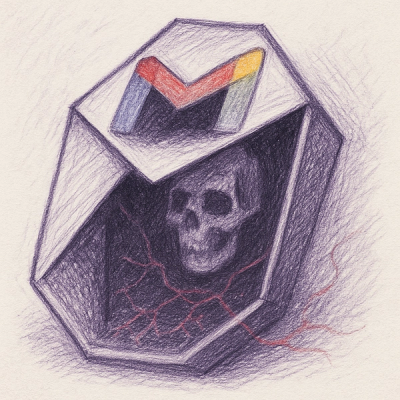
Research
NPM targeted by malware campaign mimicking familiar library names
Socket uncovered npm malware campaign mimicking popular Node.js libraries and packages from other ecosystems; packages steal data and execute remote code.
dnd-kit-sortable-tree
Advanced tools
[](https://www.npmjs.org/package/dnd-kit-sortable-tree) [](https://www.npmjs.org/package/dnd-kit-sortable-tree) [

Play around in examples to check the API and see what it can do.
npm install dnd-kit-sortable-tree @dnd-kit/core @dnd-kit/sortable @dnd-kit/utilities
Check out the Storybook for code samples and play around. You could also play with it on playcode
Shortly, you need to render:
<SortableTree
items={/* array of your tree items */}
onItemsChanged={/* callback when items are reordered */}
TreeItemComponent={/* component that renders a single tree item */}
/>
And TreeItemComponent is usually your data wrapped in SimpleTreeItemWrapper or FolderTreeItemWrapper:
React.forwardRef((props, ref) => (
<SimpleTreeItemWrapper {...props} ref={ref}>
<div>{props.item.value}</div>
</SimpleTreeItemWrapper>
));
Note that wrapping in forwardRef and passing ref to SimpleTreeItemWrapper is very important!
Here's the very minimal code to add a Sortable Tree. You shouldn't use it as is in your project, but it could be easier to grasp what's going on.
export const Minimal = () => {
const [items, setItems] = useState(initialMinimalData);
return (
<SortableTree
items={items}
onItemsChanged={setItems}
{
/*
* You need to pass the component rendering a single item via TreeItemComponent props.
* This component will receive the data via `props.item`.
* In this example we inline the component, but in reality you should extract it into a const.
*/ ...{}
}
TreeItemComponent={React.forwardRef((props, ref) => (
<SimpleTreeItemWrapper {...props} ref={ref}>
{/* HERE GOES THE ACTUAL CONTENT OF YOUR COMPONENT */}
<div>{props.item.id}</div>
</SimpleTreeItemWrapper>
))}
/>
);
};
/*
* Configure the tree data.
*/
const initialMinimalData = [
{ id: '1', children: [{ id: '4' }, { id: '5' }] },
{ id: '2' },
{ id: '3' },
];
Here's the minimal viable example that you could potentially copy&paste to your project to start from.
export const MinimalViable = () => {
const [items, setItems] = useState(initialViableMinimalData);
return (
<SortableTree
items={items}
onItemsChanged={setItems}
TreeItemComponent={MinimalTreeItemComponent}
/>
);
};
type MinimalTreeItemData = {
value: string;
};
/*
* Here's the component that will render a single row of your tree
*/
const MinimalTreeItemComponent = React.forwardRef<
HTMLDivElement,
TreeItemComponentProps<MinimalTreeItemData>
>((props, ref) => (
/* you could also use FolderTreeItemWrapper if you want to show vertical lines. */
<SimpleTreeItemWrapper {...props} ref={ref}>
<div>{props.item.value}</div>
</SimpleTreeItemWrapper>
));
/*
* Configure the tree data.
*/
const initialViableMinimalData: TreeItems<MinimalTreeItemData> = [
{
id: '1',
value: 'Jane',
children: [
{ id: '4', value: 'John' },
{ id: '5', value: 'Sally' },
],
},
{ id: '2', value: 'Fred', children: [{ id: '6', value: 'Eugene' }] },
{ id: '3', value: 'Helen', canHaveChildren: false },
];
canHaveChildren - Default: true.
If set to false, prevents any node from being dragged into the current one.
Also accepts a function: (dragItem) => bool which could conditionally determine if a certain item could be a children of a node
disableSorting - Default: false. If set to true, prevents node from being dragged (i.e. it can't be sorted or moved to another node)
<SortableTree>)items - mandatory, items shown in a tree
onItemsChanged - mandatory, callback that is called when dragging of certain item is finished. You should preserve new state and adjust the value of items prop as needed.
TreeItemComponent - mandatory, component that renders a single tree row.
indentationWidth - optional, padding used for children
pointerSensorOptions - optional, configures the condition when item dragging starts. Defaults to:
{
"activationConstraint": {
"distance": 3
}
}
disableSorting - optional, you could set this to true to completely disable the sorting
keepGhostInPlace - optional, you could set this to true to keep the Node that you are dragging in it's original place in a Tree. Check VSCode sample to see it in action.
dndContextProps - optional, override any prop of underlying DndContext.
sortableProps - optional, override any prop that is passed to underlying useSortable hook.
<SimpleTreeItemWrapper> and <FolderTreeItemWrapper>)manualDrag - Default: false. Set to true if you want tree item to be draggable ONLY from dragHandle.showDragHandle - optional, set to false if you want to hide default dragHandle and show your own instead. Use <div {...props.handleProps}>DRAG_ME</div> for your own drag handle.null as dropAnimation prop (this disables the actual 'drop' animation for the Node that was dragged).{ animateLayoutChanges: () => false } to sortableProps (this disables the animation of all other nodes that were not dragged)TreeItem component in React.forwardRef and passing the ref to SimpleTreeItemWrapperstyles prop from TreeItem to SimpleTreeItemWrapperFAQs
[](https://www.npmjs.org/package/dnd-kit-sortable-tree) [](https://www.npmjs.org/package/dnd-kit-sortable-tree) [
Socket for GitHub automatically highlights issues in each pull request and monitors the health of all your open source dependencies. Discover the contents of your packages and block harmful activity before you install or update your dependencies.

Research
Socket uncovered npm malware campaign mimicking popular Node.js libraries and packages from other ecosystems; packages steal data and execute remote code.

Research
Socket's research uncovers three dangerous Go modules that contain obfuscated disk-wiping malware, threatening complete data loss.

Research
Socket uncovers malicious packages on PyPI using Gmail's SMTP protocol for command and control (C2) to exfiltrate data and execute commands.